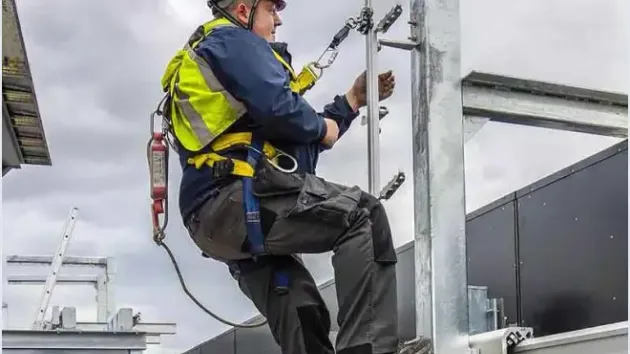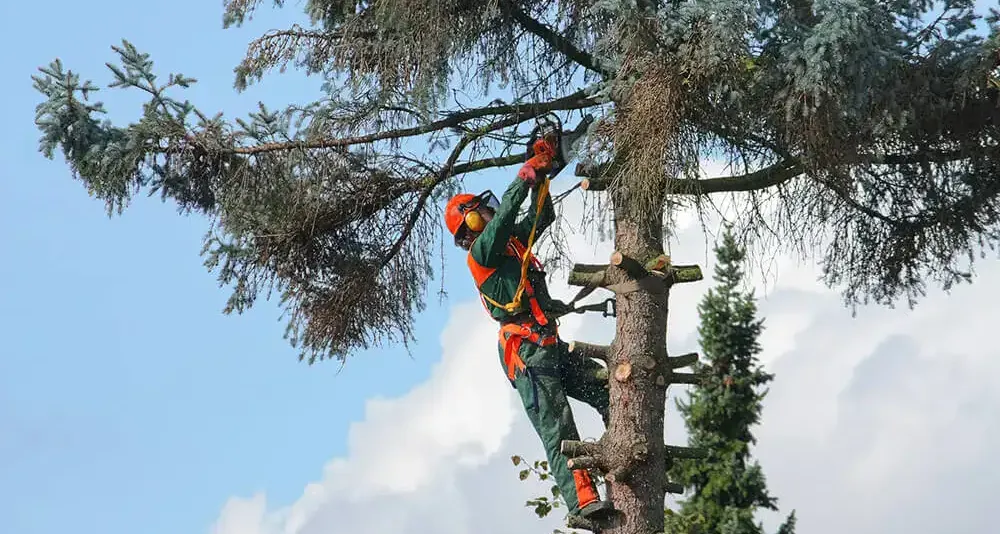Introduction
In spite of the recent emphasis on safety training and measures, logging continues to be one of the most dangerous professions in Canada and around the world. From climbing trees to felling, bucking, chipping, loading, transporting, and storing logs, the tasks performed by workers in the industry are often physically exhausting and may become very risky.Potential Hazards
The most common risks associated with cutting and processing trees include:
Being Struck by Falling Trees, Branches, or Logs.
The majority of work-related injuries and fatalities in the logging industry are the result of employees being struck by falling trees or logs. Cutting very tall trees can be particularly dangerous, especially if the task is performed in a hasty manner. Unforeseen events – such as the falling of a broken limb that is stuck between two trees – can have tragic outcomes, but are entirely preventable if workers are properly trained to exercise a more cautionary attitude while performing their jobs.Falling from Trees.
Trees that are exceptionally tall cannot be felled safely and efficiently in one go because they are prone to break in the process. Loggers must therefore climb these trees and remove the “top” in order to reduce their length. The cutting of the trees is made safer and longer, more valuable logs can be obtained this manner. However, the workers who must climb the trees are exposed to the risk of falling from heights. If they are not trained to implement fall arrest systems correctly, this may lead to serious injuries and even death.Wildlife Encounters.
Workers involved in the cutting and processing of trees are often required to travel and perform tasks in bear country, which puts them at risk of encountering dangerous bears. Without proper training, loggers may not be able to recognize the intention of the animal and could increase the likelihood of injury. Being able to tell whether a bear is defensive or aggressive can help a worker determine the best course of action in a given situation. The correct response could save a logger’s life and maintain the safety of their co-workers.Working Remotely.
Loggers may work alone or in small groups, but they are almost always required to work in remote areas that are not easily accessible for emergency services. This does not necessarily increase the risk of injury, but it does make it less likely that a worker receives help on time in case of an accident. Especially when working alone, employees must take extraordinary precautions to maintain an active communication channel with supervisors and minimize factors that could put them at risk.
Incident Prevention
Even though the logging industry has been singled out as the most dangerous sector to work in for many years, there are employees and supervisors who maintain a risk-oriented attitude to their jobs. This, together with a continuing lack of proper training, is the reason why thousands of injuries are still being reported on a yearly basis, even though the total number of workers in the industry is relatively small.
So long as the process of cutting and processing trees is not completely automatized, the most effective way to prevent further incidents is to ensure that all workers are rigorously trained to recognize the dangers associated with their profession. A logger who understands the necessity and importance of safety measures is more likely to apply the latter in his daily work routine.
In case an accident does occur, the correct use of personal protective gear – which is also frequently ignored in the industry – can save lives. From hard hats to eye protection, gloves, boots, and lower/upper body gear, loggers must learn how to maintain and handle a wide range of PPE in order to stay safe.
Recommended Safety Courses



What You Can Do to Stay Safe
As a logger involved in the cutting and processing of trees, your first concern should be to become aware of and prepare yourself for the dangers most commonly associated with your line of work. In Canada, your employer is under legal obligation to provide access to the necessary safety courses for you and your co-workers.
For a detailed list of safety courses best suited for your needs, please consult our Logging and Forestry industry page and navigate to your specific job.



